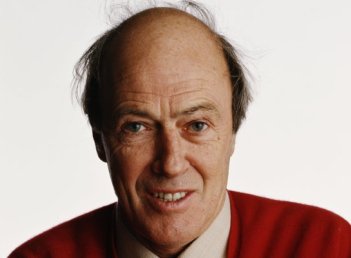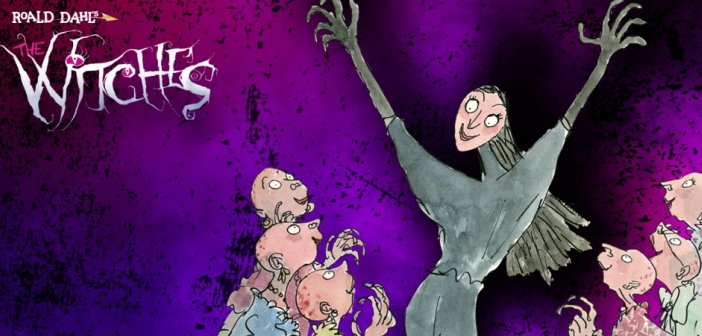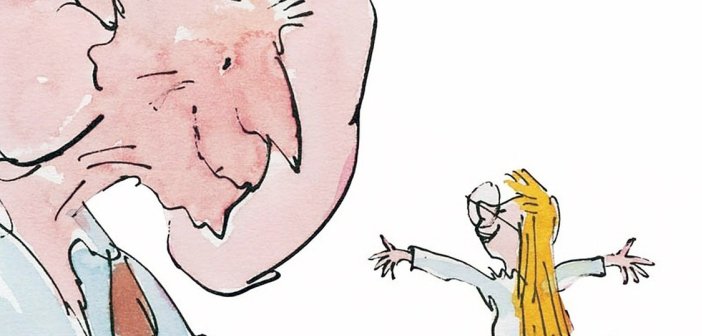Literature on Film | 12 | Roald Dahl’s Legacy is Trogglehumps, Whizzpoppers and Sparkling Imagination
Witches and giants, marvellous medicines, fantastic foxes, great glass elevators and an amazing chocolate factory where dreams are made – Roald Dahl’s limitless imagination helped shape generations of young readers. Even if those young readers were reading under their covers or behind a couch for fear of trogglehumpers.

Born in 1916 South Wales to Norwegian parents, Dahl had a colourful and mischievous childhood, moving schools a number of times before graduating in 1932. Dahl decided to forego college in favour of adventure, a decision that led to a career with the Royal Air Force as a World War II fighter pilot. During this time, Dahl was injured in a plane crash and after serious surgeries was relocated to Washington D.C. Here he began his life as an author, starting with macabre and mysterious adult stories, and finally identifying himself as the children’s author we have come to know and love with the publication of James and the Giant Peach in 1961.
Roald Dahl was a big part of my childhood, but two of his tales in particular stood out for me: The Witches and The BFG. Why these two, you might ask? Well, the answer is quite simple: as a child I found them terrifying. The kind of terrifying that had me waking in the middle of the night, panicking about giants and suspiciously eyeing any lady wearing gloves for signs of blue spit or purple eyes. Not that any of these fears stopped me from indulging in Dahl’s delightfully imaginative worlds. Although I have to admit it has been a while since I indulged, so for the purposes of this article, a trip down memory lane was required, starting with The Witches – a novel that still features in lists of the scariest children’s stories to this day.

The Witches lays out the facts from the get go: this is not a fairy-tale about black hat wearing, broomstick riding cacklers. This is a story about real witches. “Real Witches dress in ordinary clothes and look very much like ordinary women. They live in ordinary houses and they work in ordinary jobs”. Real witches despise children and intend to rid the world of each and every child by squelching them one by one. We find out about real witches from the main protagonist of the story, a nameless character only referred to as ‘Boy’. Our hero has learned everything there is to know about real witches from his grandmother, a Norwegian who is more than familiar with the subject, having lost a thumb during an encounter with a witch.
Grandmother looks after Boy as his parents are no longer with them. When she takes ill with a case of pneumonia, her doctor recommends a trip to the seaside to aid her convalescence. Unfortunately, this trip puts Boy and Grandmother in harm’s way, as the annual meeting of England’s child-hating witches happens to be at the same hotel. Things get worse when Boy finds himself unknowingly attending the meeting, chaired by the Grand High Witch of All the World herself. Here he discovers their plan to change all the children of England into mice so they will be easier to squelch. Boy manages to escape the witches with his life, but on four legs rather than two. Boy and Grandmother must stop the witches, but what can one old lady and a mouse-person do to stop all the witches of England? Well, a lot, but I’ll let you find that out for yourself.
The Witches was adapted for screen and released in 1990. Directed by Nicolas Roeg (most notable for The Man Who Fell to Earth), The Witches starred Anjelica Huston as the Grand High Witch and featured special effects by Jim Henson. Special effects which were at the time disturbing, particularly in regards to the Grand High Witch. In the book, the emphasis placed on The Grand High Witch of All The World’s face is enough to give any small child nightmares: “That face of hers was the most frightful thing and frightening thing I had ever seen. Just looking at it gave me the shakes all over, it was so crumpled and wizened, so shrunken and shriveled, it looked as though it had been pickled in vinegar. It was a fearsome and ghastly sight. There was something terribly wrong with it, something foul and putrid and decayed”. Well, the film takes this unsettling description and turns it into something far creepier.

Allan Scott’s adaptation was mindful of Dahl’s original tale but there were some noticeable variations. Boy and Grandmother are both given names, Luke and Helga; there are some slight variations in how one would recognize a witch; and certain events are added to the plot that do not take place in the book. These are completely forgivable. After all, we are dealing with a completely different medium and audience. However, one variation is absolutely unforgivable: the Hollywood-style saccharine ending which Dahl himself is reported to have loathed. It detracts from the message of the source material, its realism, and most importantly, its heart: “It doesn’t matter who you are or what you look like, so long as somebody loves you”.
While I could not pinpoint exactly how old I was when I discovered The Witches, I distinctly remember my first experience of The BFG. I was in first class and we were shown the film as a treat. I’m pretty sure I didn’t sleep for at least a week after, while I hid under the covers waiting for The Fleshlumpeater’s massive claw to come poking through my window. Of course I immediately sought out the book because, at that age (or at any age really), there is nothing quite like a good fright!

Written just a year previous to The Witches, The BFG is perhaps one of Dahl’s best loved tales and according to Dahl, his own favourite. The BFG – or The Big Friendly Giant, to give him his full title – lives in Giant Country with nine other fearsome giants. These nine ghastly giants spend their days sleeping and tormenting the BFG, while at night they travel around the world gobbling humans. The BFG doesn’t care to gobble humans and instead prefers to spend his days hunting dreams, so when night comes he can grant the children of the world good dreams. One night, while out about his dream business, the BFG is spotted by a young orphan called Sophie, leaving him with no choice but to whisk her away to Giant Country. Here, the fun begins as Sophie learns all about dreams and giants, and helps the BFG find the courage to rid the world of the loathsome giants once and for all.
What I loved most about The BFG was the colourful way in which he spoke. He never had the right words to express himself, yet you were never left in any doubt about what he meant. “’Words’, he said, ‘is oh such a twitch-tickling problem to me all my life. So you must simply try to be patient and stop squibbling. As I am telling you before, I know exactly what words I am wanting to say, but somehow or other they is always getting squiff-squiddled around.’” I found great enjoyment in discovering words like whizzpoppers and pogswizzler.

The BFG found its way to the screen in 1989. Directed by Brian Cosgrove, who produced prominent 80’s classic animations like Danger Mouse and Count Duckula, this adaptation is not unlike its source material, except for a few minor changes to the timeline (e.g. in the book, The BFG gives the Fleshlumpeater the trogglehumper near the beginning of the story, and in the film it happens near the end for dramatic effect). And once again, the ending of this adaptation is changed, though not as drastically as in The Witches.
I would almost go so far as to say that with The BFG, screenwriter John Hambley has produced a near perfect adaptation, but unfortunately, one that is very much a product of its time. It just doesn’t hold up nowadays. I found myself constantly picking up my phone during a recent viewing and I even went so far as to fast forward a few places that just annoyed me. It is full of that tremendous music that was a staple of most 80’s material aimed at children. You know the kind. It had an almost threatening vibe but it built up to a courageous chorus. It was both terrifying and elating at the same time. And the animation style screams ‘late 80s, early 90s’, as do the musical numbers and the voice talent. A point in its favour is that it still maintains the fear factor when it comes to the gruesome giant. But then again, most 80’s animations rekindle that feeling in my generation. I most certainly wouldn’t be showing this to any children born in the last decade or so. They’d look at you like you had lost the plot. Thankfully, Spielberg and Disney are stepping in to bring an updated adaptation to a new audience which, judging from the trailers, will warrant some tissues.
[youtube id=”y1fZg0hhBX8" align=”center” autoplay=”no” maxwidth=”750"]
The Witches and The BFG are not the only, nor arguably the most famous, of the Dahl adaptations. Six more of his books have been adapted for screen and, in some cases, more than once. An interesting tidbit I discovered while researching this article was that Dahl himself had adapted a tale or two by another famous British author. Dahl was serving in the RAF when he developed a friendship with Ian Fleming. This later led to Dahl being invited by Cubby Broccoli to adapt Fleming’s Bond novel You Only Live Twice and his children’s story Chitty Chitty Bang Bang for screen. However, writing both these adaptations seemed to have put Dahl off screenwriting for good, as he stated that You Only Live Twice was “the biggest load of bullshit I have ever put my hand to” and he did not seem to fare much better with Chitty Chitty Bang Bang, where he was not even invited to the film’s premiere.
On the 23rd of November 1990, Dahl left this world a sadder place. I was just coming into reading with a passion when he passed away and another year or two would go by before I came to fully understand and appreciate his work. If Dahl was alive today, I would very much like thank him for those strikingly imaginative tales that helped encourage not only my avid interest in reading but my imagination, and granted me some of the best days of my childhood. (Adulthood too, if I’m honest.) Five decades have passed since Roald Dahl published his first famous children’s book and while we may never see an author quite like him, I doubt his work will ever be forgotten.
Featured Image Credit

